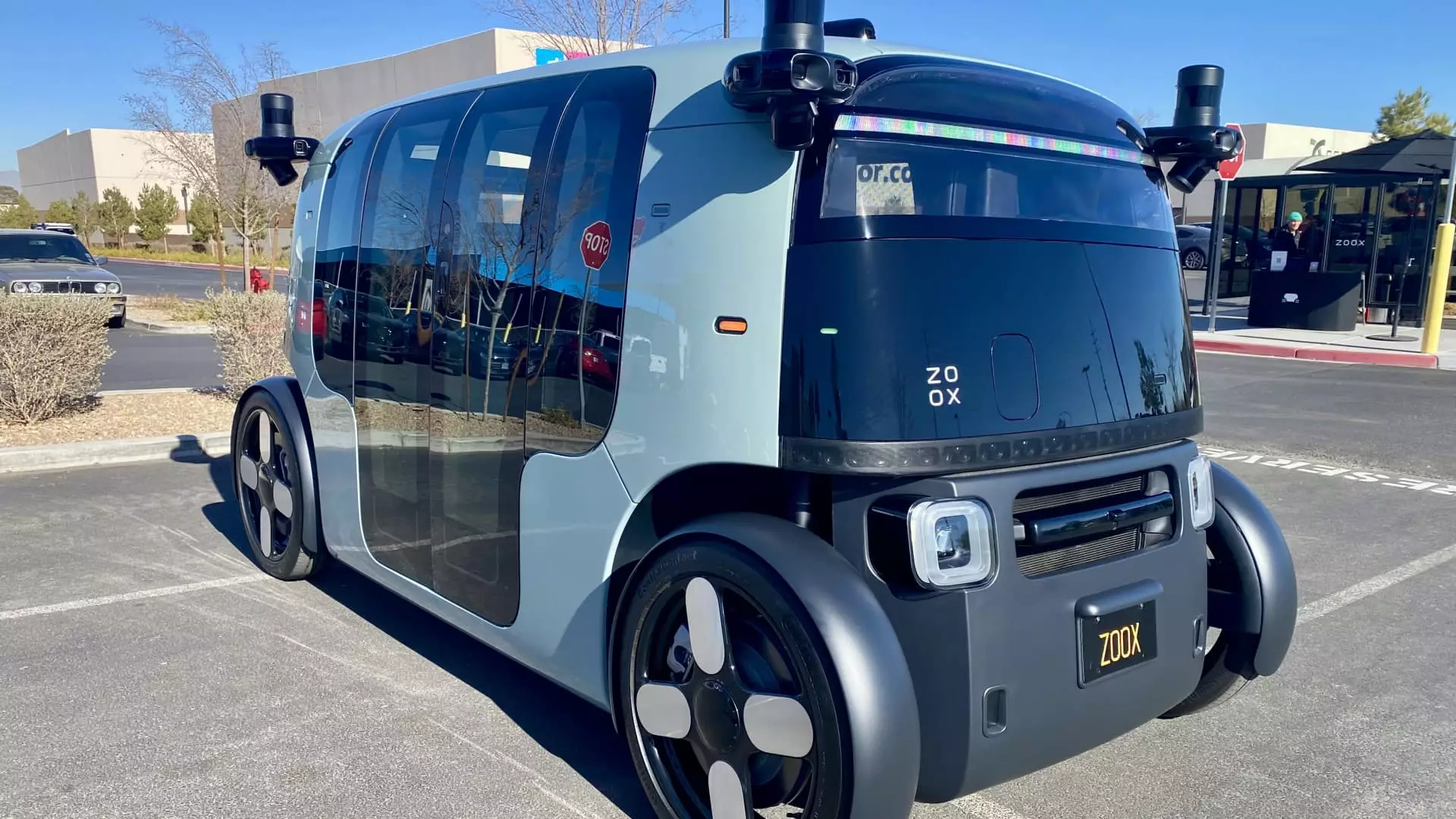The landscape of autonomous vehicles, particularly within the sphere of robotaxis, is rapidly evolving. This year stands as a pivotal moment for Amazon’s wholly-owned subsidiary Zoox, which is aiming to take significant strides toward the commercialization of its self-driving taxi service. As Zoox embarks on this journey, challenges abound, especially when considering the broad skepticism that has emerged among investors regarding the viability of autonomous vehicles.
The State of the Market: Growing Expectations Amid Doubt
Despite the optimism radiating from Zoox’s headquarters, the sentiment in the autonomous vehicle market is increasingly mixed. Not only have legacy automotive giants like Ford and Volkswagen curtailed their self-driving divisions, but some investors have begun doubting the worthiness of such endeavors altogether. Zoox, which Amazon acquired for $1.3 billion in 2020, has been testing its innovative robotaxis—designed without traditional controls—on public streets since early 2023. This purposeful engineering sets Zoox apart from competitors like Waymo, which retrofits conventional vehicles to include autonomous technology.
Jesse Levinson, co-founder and Chief Technology Officer, remains hopeful about Zoox’s path ahead. He expressed enthusiasm for expanding both the operating regions and the scale of their self-driving fleet, which is currently limited to a few dozen vehicles. With grand ambitions to launch rides to the public soon, Zoox appears resolute in carving its niche in the competitive robotaxi sector.
The city of Las Vegas has been positioned as Zoox’s flagship market, with plans for an “Early Rider Program” slated to begin in the near future. The company aims to expand its testing operations to cities like San Francisco, Miami, and Austin, although specific timelines for these expansions remain unannounced. Levinson believes that by the end of the decade, autonomous vehicles, especially the Zoox robotaxis, could become the preferred mode of transport in major U.S. cities.
Yet, even while expressing forward-looking optimism, Zoox’s journey will not be without challenges. Past experiences from competitors like GM’s Cruise serve as sobering reminders of how quickly ambitions can unravel. With an accident leading to the suspension of the Cruise fleet, Zoox must navigate not only technical hurdles but also ensure robust safety records to maintain confidence in its offerings.
One of the uniquely defining aspects of Zoox’s robotaxi design is its unconventional form, which eliminates the need for a human driver altogether. The vehicle has a distinct design, often critiqued for its box-like shape, yet that very design serves functional purposes that could enhance passenger experience. Inside, rows of seats face each other, creating a communal atmosphere, and without a steering wheel or pedals, the layout suggests an experience centered around comfort and conversation rather than the mechanics of driving.
On a recent test drive around Las Vegas, the robotaxi showcased a commendable performance: it navigated turns proficiently and maintained a confident pace. However, there were moments that raised eyebrows, such as choosing to remain in a lengthy vehicle line instead of maneuvering around obstacles. Such behavior underscores the ongoing developmental journey Zoox faces; maximizing assertiveness without crossing into recklessness is a fine line that the company continues to refine.
Despite strides in technology, questions linger regarding the commercial viability of this evolving industry. Experts, including Sam Abuelsamid from Telemetry Insights, acknowledge that while Zoox’s technological capabilities show promise, challenges remain in determining an effective business model to sustain operations and profitability. The original grand ambitions from various players in the autonomous vehicle space have dimmed, as evident by the challenges Waymo faced in scaling its services.
The reality of operating costs, coupled with hurdles in regulation and consumer trust, complicates the pathway to success in the robotaxi market. It’s worth noting that while there are advancements in technology and operational frameworks, results have not reflective of the initial projections made just a few years ago. The complexity of transitioning to fully autonomous operations requires not only technological innovation but also robust public acceptance to thrive.
As Zoox sets out on its mission to commercialize its robotaxi service, the company stands at a unique intersection of opportunity and challenge. With prospective plans to roll out services in the near future, it aims to distinguish itself from not only conventional automakers but also established leaders like Waymo. However, the doubts surrounding the autonomous vehicle space and the complexities of robust business models remain a looming concern. As Zoox embarks on this transformative journey, the eyes of the industry—and indeed consumers—will be fixed on its progress. The coming months could illuminate whether Zoox can navigate these challenges successfully or if it will join the ranks of those that have faltered in the quest for an autonomous future.

